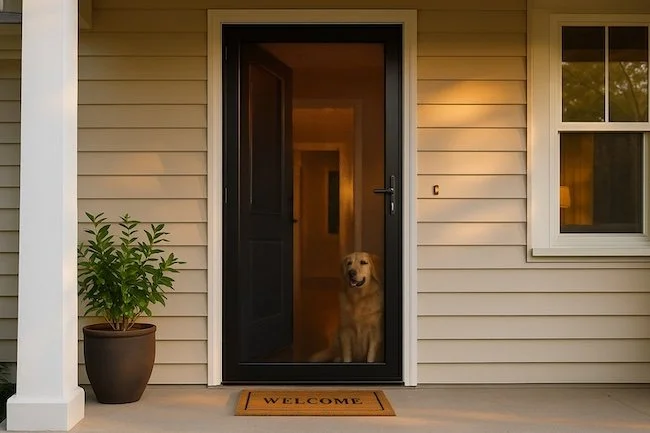Do Security Screens Really Prevent Break-Ins?
When people think of home security, they picture alarms, cameras, or motion sensors. But the truth is, most burglars don’t worry about technology—they look for physical weakness. A window left open. A door with flimsy glass. A screen that pops out with a light shove.
According to the FBI’s 2023 Uniform Crime Report, over 57% of residential break-ins occur through a door or window. That’s the reality most homeowners underestimate.
So the question is simple: can a well-built security screen actually stop that?
The Physics of Forced Entry
A regular insect screen rips under five pounds of force—less than the pressure of a strong push.
Security screens, however, are designed to absorb and redirect impact energy. Most high-grade models use marine-grade stainless-steel mesh (typically 0.9mm) and extruded aluminum frames that are mechanically fastened to the home’s structure.
Independent testing under Australian Standard AS5039 and U.S. ASTM F1233 shows these screens withstand:
Repeated impacts exceeding 220 joules, equal to a full-force kick from a 200-lb person.
Knife-shear tests designed to simulate slashing or cutting attempts.
Jemmy tests, where tools like screwdrivers or crowbars are used to pry open frames.
When subjected to these trials, compliant security screens didn’t tear, buckle, or detach from the frame. The conclusion is simple: in lab conditions, they work.
The Real-World Data
Lab results are one thing. What about real homes?
A 2022 Insurance Information Institute report found that visible physical barriers—like reinforced screens or grilles—cut burglary attempts by up to 60%. Police reports in Phoenix and Las Vegas mirror that statistic: intruders tend to flee once they meet resistance lasting more than ten seconds.
Burglars are not looking for a challenge; they’re looking for speed. Every extra second spent fighting a barrier increases their risk of getting caught. A visible, permanent obstacle tells them: this house is going to take too long.
Security screens occupy a unique niche—they prevent intrusion without changing the lifestyle inside the home. You can open windows for air circulation while keeping doors locked and secure.
Aesthetic and Lifestyle Benefits
Unlike bars or grates, modern security screens look elegant. Powder-coated finishes match architectural styles and don’t reduce visibility or light. In hot climates like Nevada or Arizona, this means you can leave windows open at night to cool the house naturally without sacrificing security.
That airflow matters. The Department of Energy estimates natural ventilation can cut cooling costs by up to 30%, so security screens often deliver comfort and efficiency as side benefits.
What the Experts Say
According to Boss Security Screens, the effectiveness of a screen comes down to three factors:
Mesh Composition: Stainless steel resists cutting, corrosion, and stretching far better than aluminum or fiberglass.
Frame Engineering: Mechanical fastening and deep anchoring outperform adhesive or surface-mounted frames.
Testing & Certification: Products should meet or exceed AS5039 and ASTM F1233 impact and knife-shear standards.
Boss engineers describe their systems as “a balance between architecture and armor.” The idea isn’t to make a home look fortified—it’s to make strength invisible.
Case Study: A Las Vegas Homeowner
In 2024, a homeowner in Henderson reported an attempted burglary while she and her children slept. The intruder tried to pry open a back sliding door but failed after bending a screwdriver and cracking the frame. Police later confirmed the installed stainless-steel security screen door had prevented entry.
Damage cost: under $200.
Potential loss if breached: over $50,000 in valuables—and safety.
The One Caveat
Not all “security screens” are created equal. Some low-cost imports use decorative mesh that looks similar but lacks structural certification.
If you’re shopping, check for:
Testing documentation (AS5039 or ASTM F1233)
Warranty on both mesh and frame
Permanent installation method (no clip-on frames)
Without those, you’re paying for aesthetics, not protection.
Conclusion
So, do security screens really prevent break-ins? Yes—when properly designed, tested, and installed, they physically stop entry at the most common points of attack. They act as the first and most reliable line of defense, quietly deterring intruders long before alarms or cameras activate.
In short: a good security screen buys time—and time stops burglars.


